"There are many aspects that I don't share today with the Enrico Crippa of five or six years ago. Now I am much more concerned with concentration and neatness. Subtract and not overlap. Cleaning rather than colouring. I believe that a cook's improvement comes through simplification, not complication. Gualtiero Marchesi was right.”
Eighteen years after his first service at the court of the Ceretto family, the chef from Brianza faces the most mature phase of his career. It is clear in the aesthetics and flavours of "Seasonal Things", the spring menu at Piazza Duomo, on the first floor of Piazza Risorgimento 4. Thirteen courses of special quality in terms of soft colours and elegant depths. In the alternation of clarity and luminosity, tributes to artists and innate personale aesthetics, animal proteins and vegetables.
Indeed vegetables are, as and more than ever, the centre of Crippa's solar system. Because the cook's maturity proceeds in parallel to that of the vegetable garden in Castiglione Falletto, near Barolo: “The farmer who was there before, Enrico Costanza,” Crippa reveals, “has made a nice change. Now there is Andrea Mastropietro, a guy who works a lot on purity and concreteness. Every year in December we meet and assess which seeds to plant. And from there the whole process begins.” A process that is first agricultural and then creative.
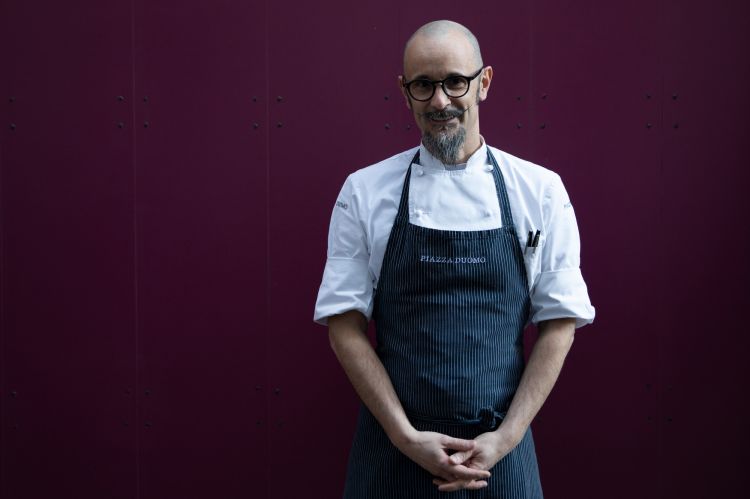
Enrico Crippa, born in Carate Brianza in 1971. First service at Piazza Duomo, 5th May 2005 (photo Cigliutti)
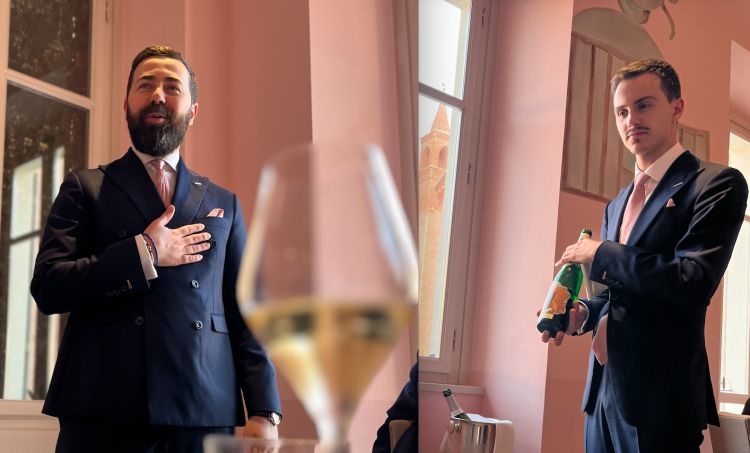
Davide Franco, restaurant manager and Jacopo Dosio, wine director at Piazza Duomo (photo Zanatta)
Lettuce and thistles, broccoli fiolari and artichokes, cardoons and pak choi, fennel, grapefruits and oranges appear on the upcoming spring menu. "I love late-winter vegetables, because they are tougher to clean and use. But soon, when peas and asparagus arrive, we must be ready to react, to ride that adrenalin rush that every micro-season unleashes.” Behind the apparent, surgical pondering of forms - increasingly circular, increasingly less angular - lies at Piazza Duomo a cuisine of emergency and not of planning: “I grew up leafing through the1970s
nouvelle cuisine books of
cuisine du marché, or the
cuisine spontanée of the unforgettable
Fredy Girardet. They taught you that the unexpected is an asset, not a limitation. I try to stick to that.”
Even and especially now that the drought increases the variables. "It's a thought I have," the chef confesses, "To water the garden you must have water, of course. But I think of the white truffle which, more than rain, needs snow at this time, which is as necessary as the showers that will have to be abundant in spring. We are the region of Barolo, Barbaresco and round hazelnuts, but in the end, people come mainly for the white truffle in autumn.” Not that there is no tourism in the Langa now: “Try to book any table for Sunday lunch, impossible. In terms of results, 2022 was also the best year ever for us.”
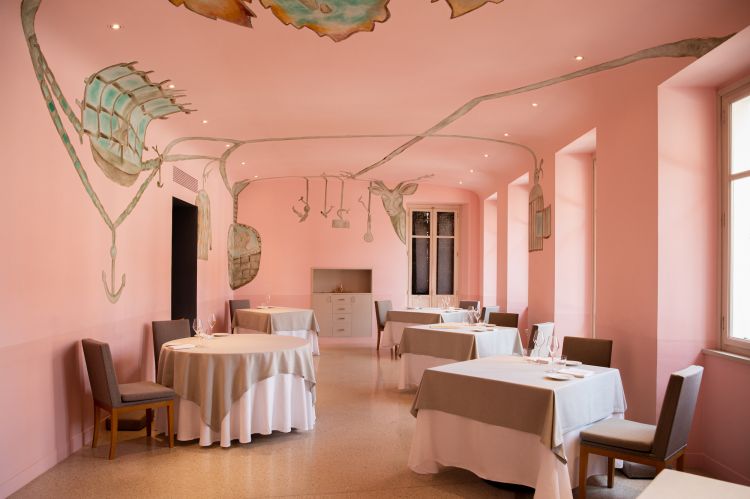
The room frescoed by Francesco Clemente (photo Cigliutti)
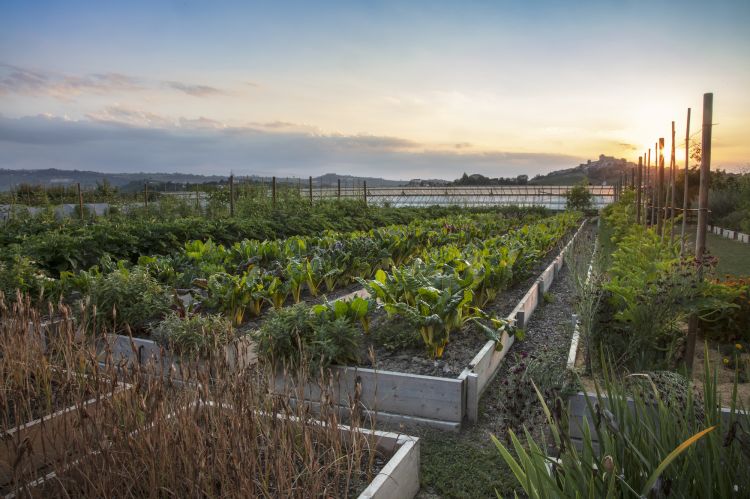
The vegetable garden in Castiglione Falletto, 100 metres from the commune of Barolo, a project that began in 2007. It’s run with organic and biodynamic methods (photo Fusaro)
And to think that, just a year ago, Piazza Duomo reduced the restaurant's opening shifts from five to four days a week: “We decided to close on Tuesday as well, in addition to Sunday and Monday. Today, only a small brigade of three people works on Tuesdays. They are dedicated to cleaning meat and fish, make sauces and broths, but they are off on Friday night. So for everyone there are three days of rest and four days of work. I was sceptical at first, but then we have been serving more people than ever.” An example to be recorded in the complex debate of our days on work/life balance.
Below are some of the 13 courses from the 'Seasonal Things' menu. They alternate the dominance of vegetables and fruits over animal proteins of land (guinea fowl, calf's heads, cotechini, 'nduja ravioli, snails and roe deer) and water (prawns, cod, turbot and cuttlefish). The service is almost always enriched by crispy wafers on the side, and, above all, by small glasses with magic broths: "These are essences," Crippa concludes, "that always contain a vegetable element. They often come from the recovery of leaves or from working on parts that we would otherwise throw away. They are concentrated purifications, the same we aimed for as children when we sucked on popsicles'. Irresistible.
SEASONAL THINGS, March 2023
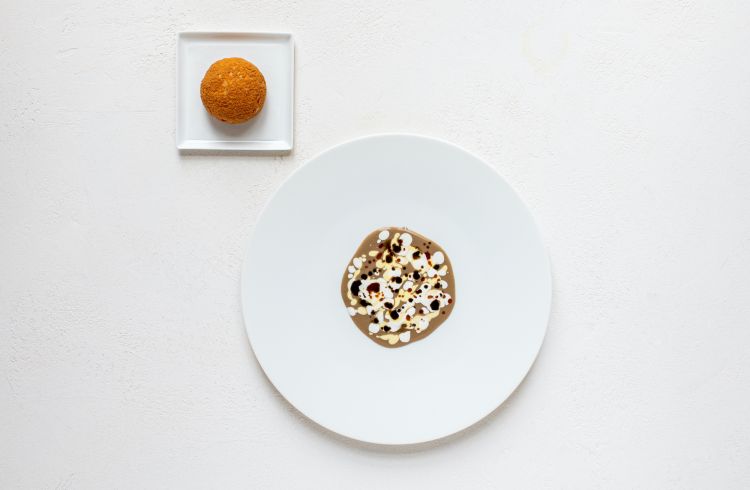
Cotechino
At the base is a thin veil of cotechino, with lentil cream and fondue. At the top left, a bijoux of Parmesan cheese. It is inspired by the painter Jackson Pollock, Gualtiero Marchesi's former muse in his famous Fish Dripping. It is the third dish of the new 'Season things' menu (preceded by a delicious Taco of guinea fowl, with sarset salad and black truffle and a Veal’s head with salsa verde, and a light garlic broth). (photo Cigliutti)
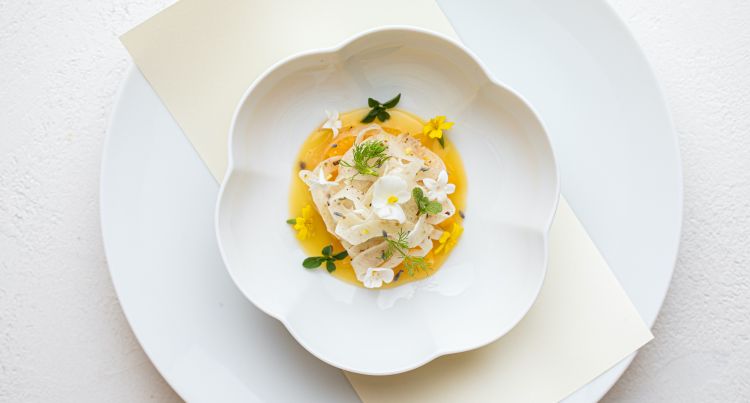
Fennel
Just after Cotechino, comes a very fresh Fennel Salad with Sanremo prawns and orange, served at the table together with a crispy tongue of spices and a prawn broth. “This is the first time I've ever served fennel in a restaurant,” explains Crippa, “I've only ever eaten it at home” (photo Cigliutti)
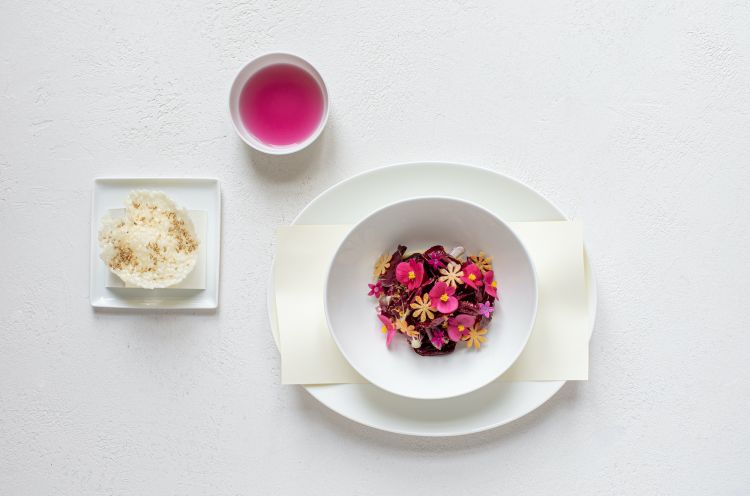
Trusot
After Fennel, here is the 2023 version of Trusot, Crippa's famous wild lettuce salad, here with a creamy white broad bean salad at the base, marinated egg yolk and edible herbs and flowers on top. It is served with a spiced waffle and a fabulous chickpea broth (photo Cigliutti)
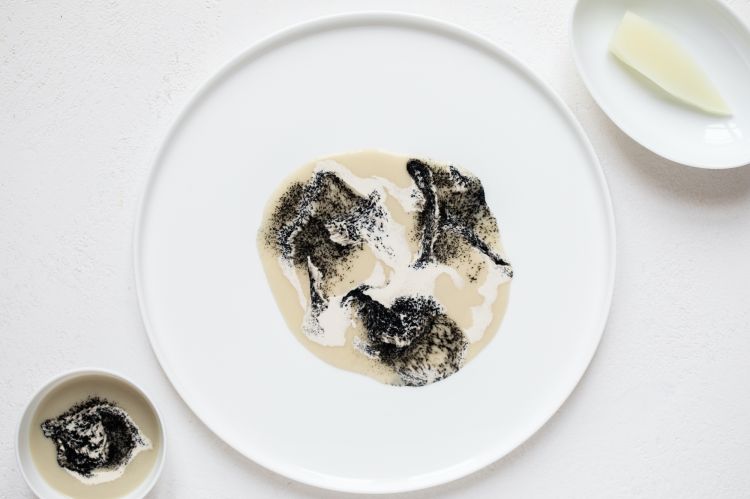
Cuttlefish
After Lettuce (barbecued with chimichurri sauce), Cod (in teriyaki sauce), Artichokes (with snails and herb butter), Calabria (Raviolo with 'nduja and mascarpone) and Turbot, we come almost to the end of the journey with Cuttlefish, the dish iconographically symbolising the menu, a homage to the unnamed work by German artist Anselm Kiefer that stands on the upper floor of Piazza Duomo. A trichrome reproducing a sheet of cuttlefish covered with cream of cardoon, anchovy sauce and squid ink. In the small glass to the side, a white polenta made of hulled maize with the same creams as above (photo Cigliutti)
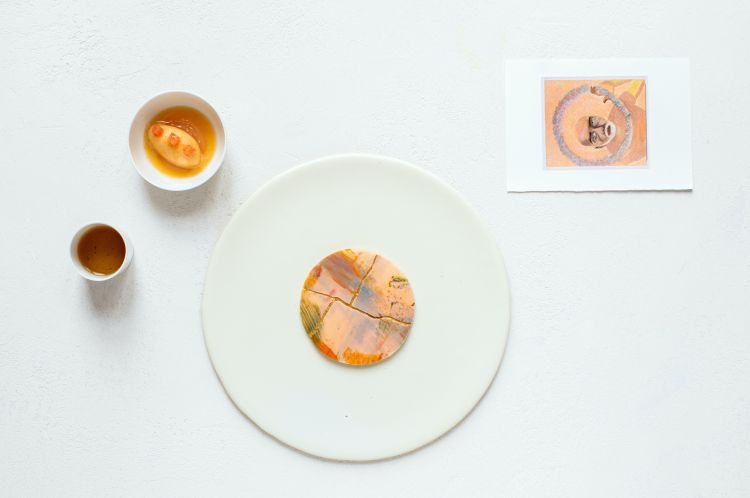
Vanilla, grapefruit, lime
The final act on the menu is a tribute to Neapolitan painter Francesco Clemente, who also painted the restaurant's frescoes. On the central plate there is a vanilla and mascarpone mousse, cinnamon biscuit, rose-tinted white chocolate. At 11 o'clock, grapefruit sorbet; below that, a lime, mint and vanilla drink (photo Cigliutti)
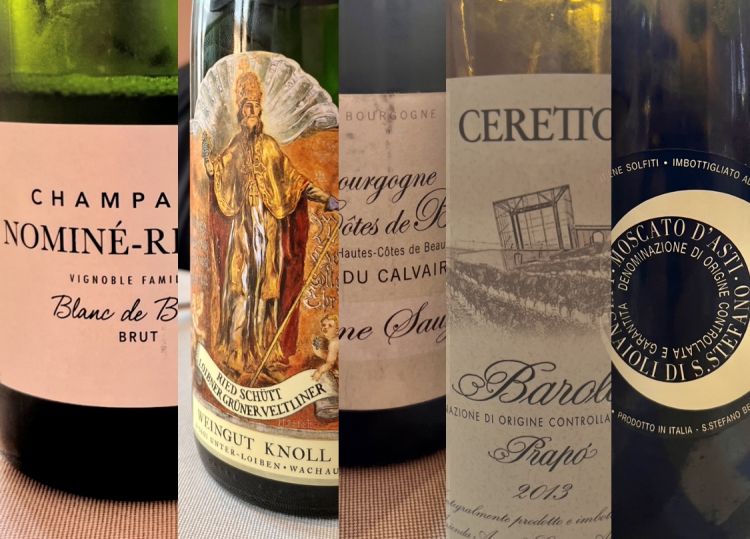
The 5 wines paired with the 'Seasonal things' menu. It is a journey among great bottles, led by wine director Jacopo Dosio. Superb pairings, complementing much more than contrasting:
- Champagne Nominé-Renard, Blanc de Blancs, Brut
- Grüner Veltliner 2021, Weingut Emmerich Knoll
- Bourgogne Hautes-Côtes de Beaune 2020, Etienne Sauzet
- Barolo Prapò 2013, Ceretto
- Moscato d'Asti 2022, I Vignaioli di Santo Stefano
(But don't count too much on these labels, the contents change every day, like the dishes)
Translated into English by Slawka G. Scarso